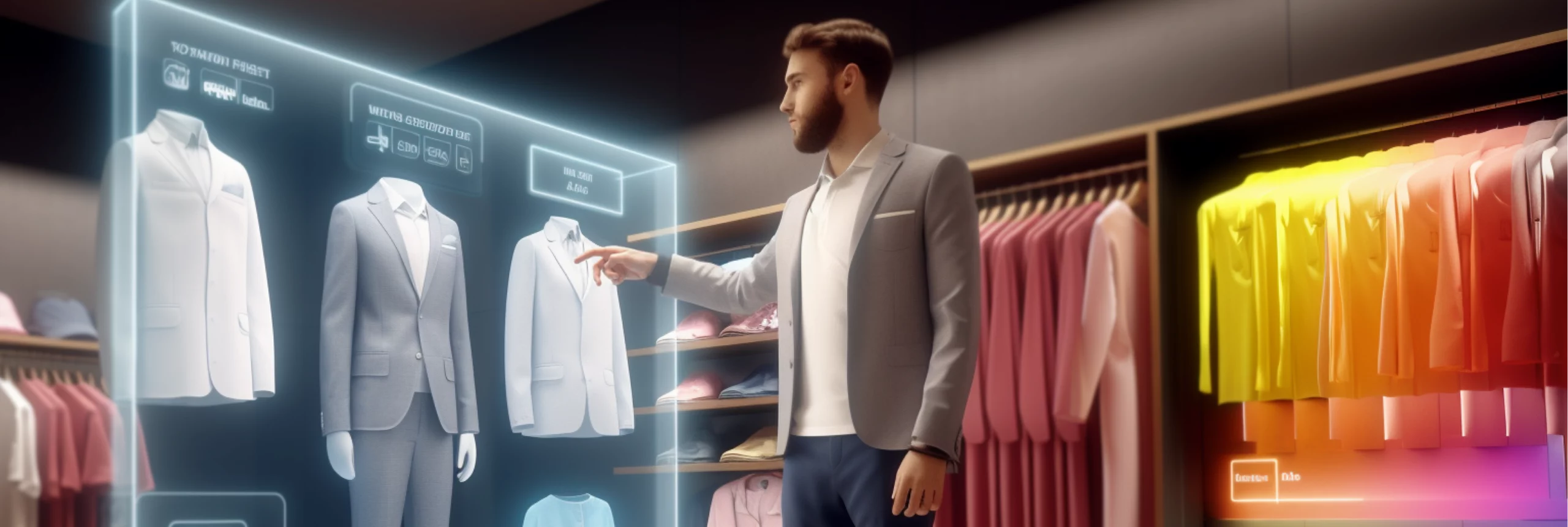How Virtual Try-On is Revolutionizing eCommerce: Cost Savings, Business Efficiency, and Enhanced Customer Experience

In the ever-changing landscape of eCommerce, staying ahead of customer expectations is paramount. Today’s savvy shoppers demand not just quality and transparency but also an immersive, personalized experience. Enter Virtual Try-On (VTO) technology—a transformative solution that’s not only elevating customer engagement but also streamlining internal operations.
Virtual Try-On technology, often powered by Augmented Reality (AR) and Virtual Reality (VR), allows consumers to virtually “wear” products, from apparel to accessories, in a real-time digital environment. This innovation is not just a customer-centric feature; it’s a multifaceted tool that can significantly impact various aspects of your eCommerce development.
Traditional product design can be a lengthy and costly endeavor, involving multiple iterations and prototypes. Virtual Try-On technology cuts through this complexity by offering real-time visualization. Designers can instantly see how a new garment or accessory looks on a virtual model, enabling rapid adjustments to colors, patterns, and styles. This real-time feedback loop can result in substantial cost savings and accelerate time-to-market.
One of the most significant advantages of Virtual Try-On technology is its ability to reduce product returns—a logistical challenge that often burdens eCommerce businesses. By allowing customers to virtually “try before they buy,” the technology minimizes sizing errors and buyer’s remorse, thereby reducing return rates. This efficiency extends to inventory management, as the data gathered can offer insights into customer preferences, helping businesses make informed stocking decisions.
Virtual Try-On technology can also serve as a rich source of analytics. By tracking user interactions, businesses can gain a deeper understanding of customer behavior and preferences. Are certain items frequently tried but seldom purchased? Such data can guide not only inventory decisions but also product development and marketing strategies, ensuring that offerings align closely with consumer demand.
As we look to the future, the integration of spatial computing into Virtual Try-On technology promises even more immersive experiences. Imagine a world where customers can walk through a virtual store, pick up products, and try them on—all from the comfort of their homes. This is not science fiction; it’s the next frontier in eCommerce.
The adoption of Virtual Try-On technology is more than a trend; it’s a paradigm shift in how eCommerce businesses operate and engage with customers. From accelerating product design to optimizing supply chains and leveraging analytics for strategic decision-making, the technology offers a plethora of benefits. As it continues to evolve, incorporating advancements like spatial computing, Virtual Try-On is set to redefine the eCommerce landscape further.
Sophisticated web design is essential for deploying Virtual Try-On technology, with the best web design agencies playing a crucial role in creating seamless, engaging eCommerce experiences.